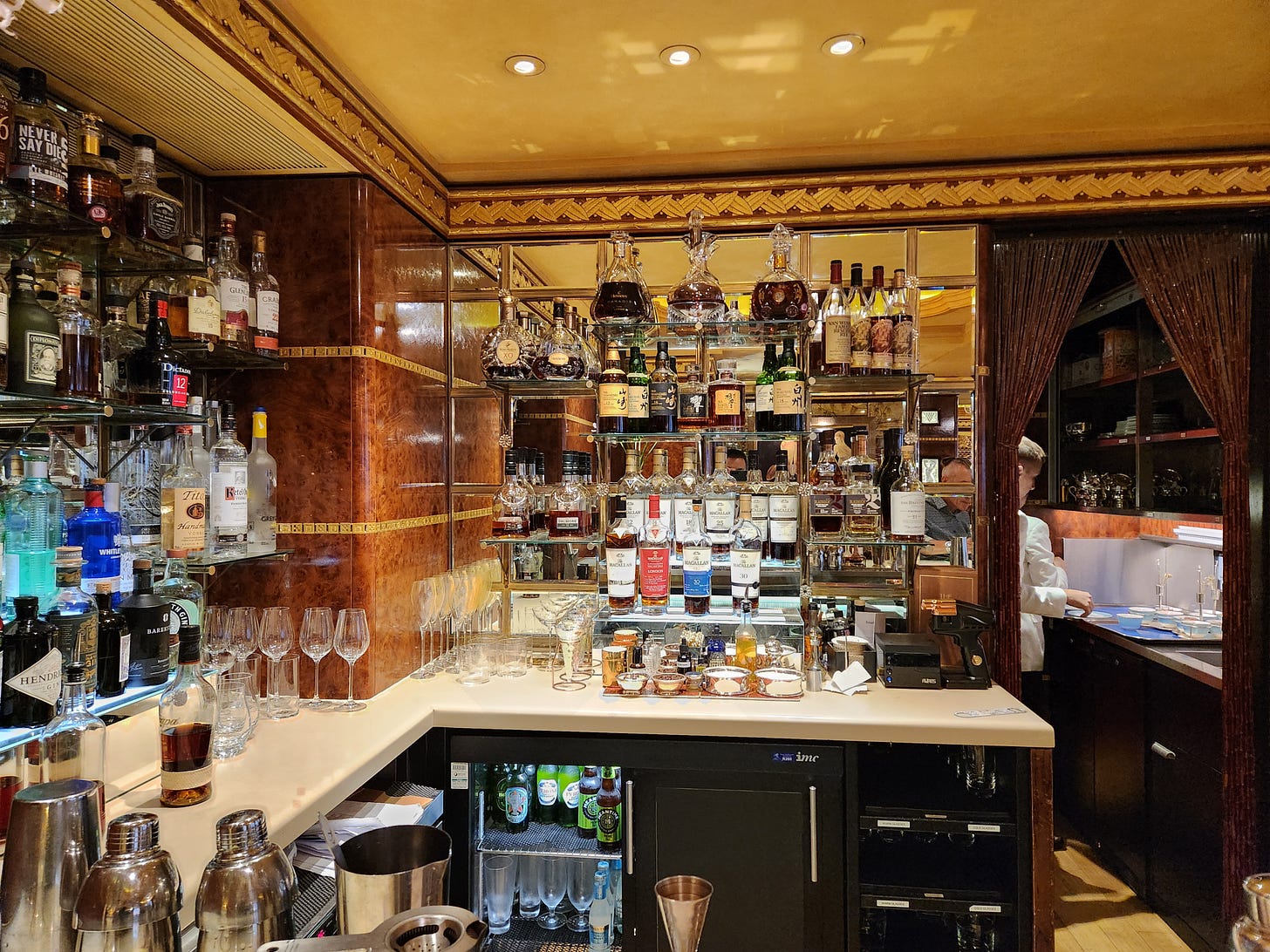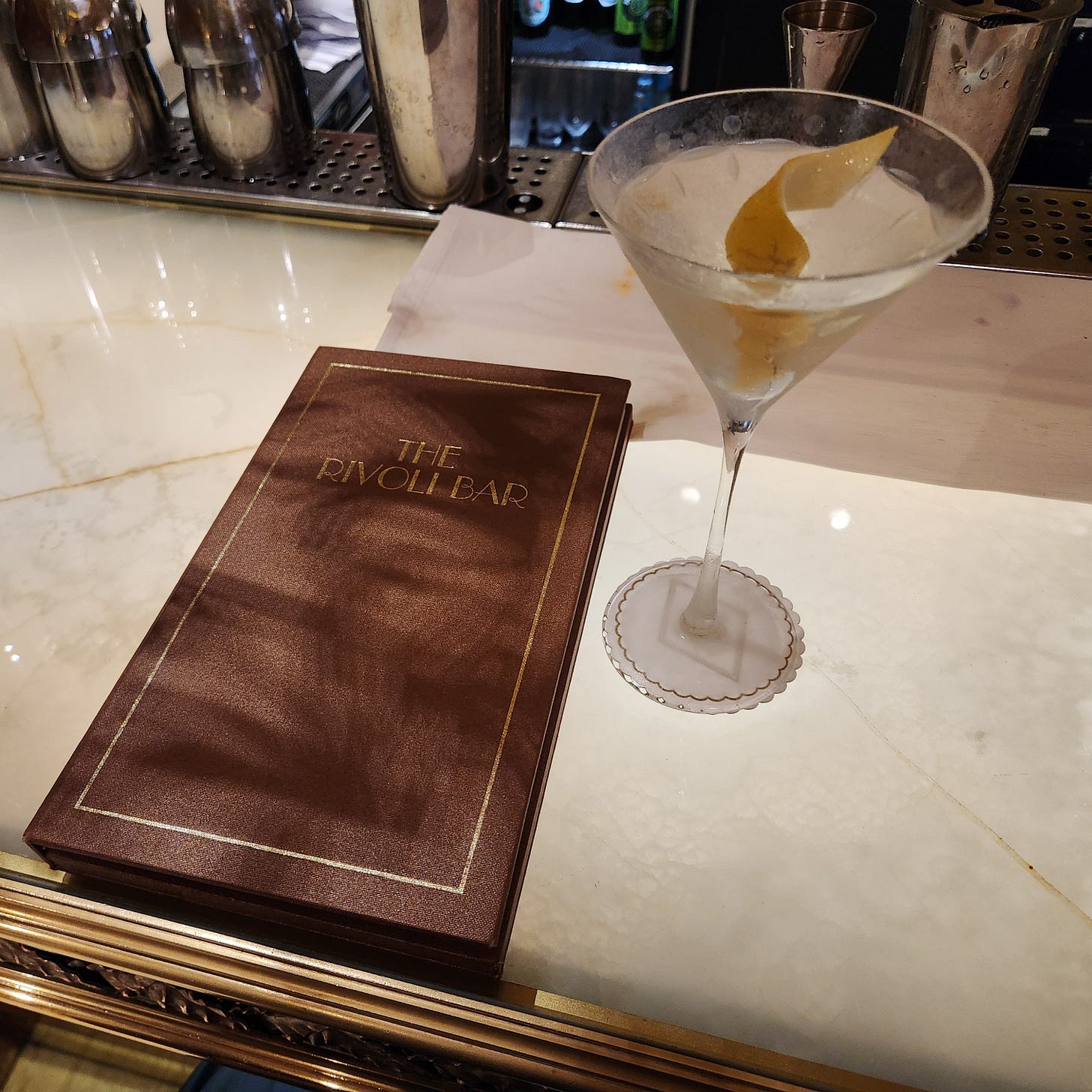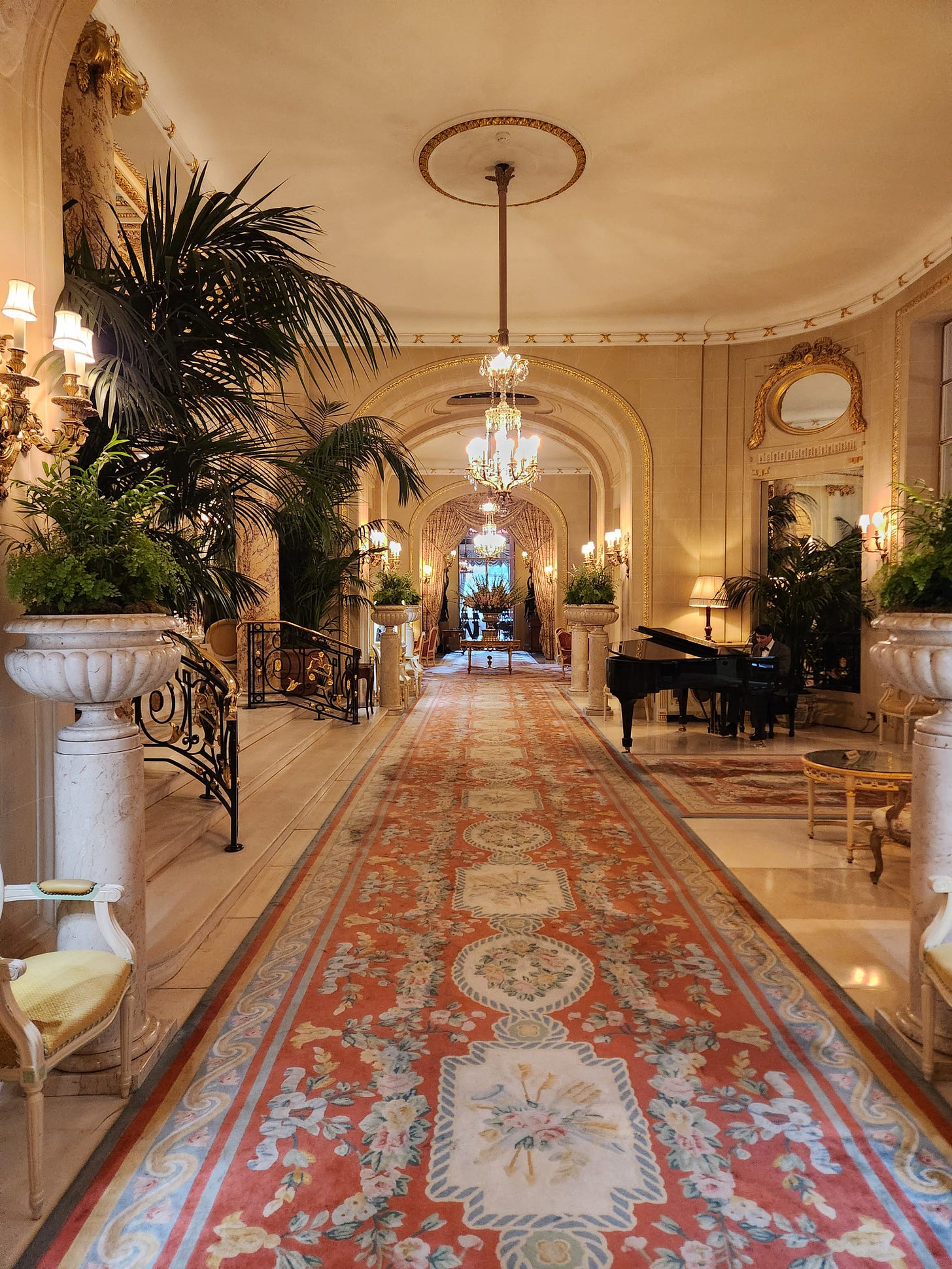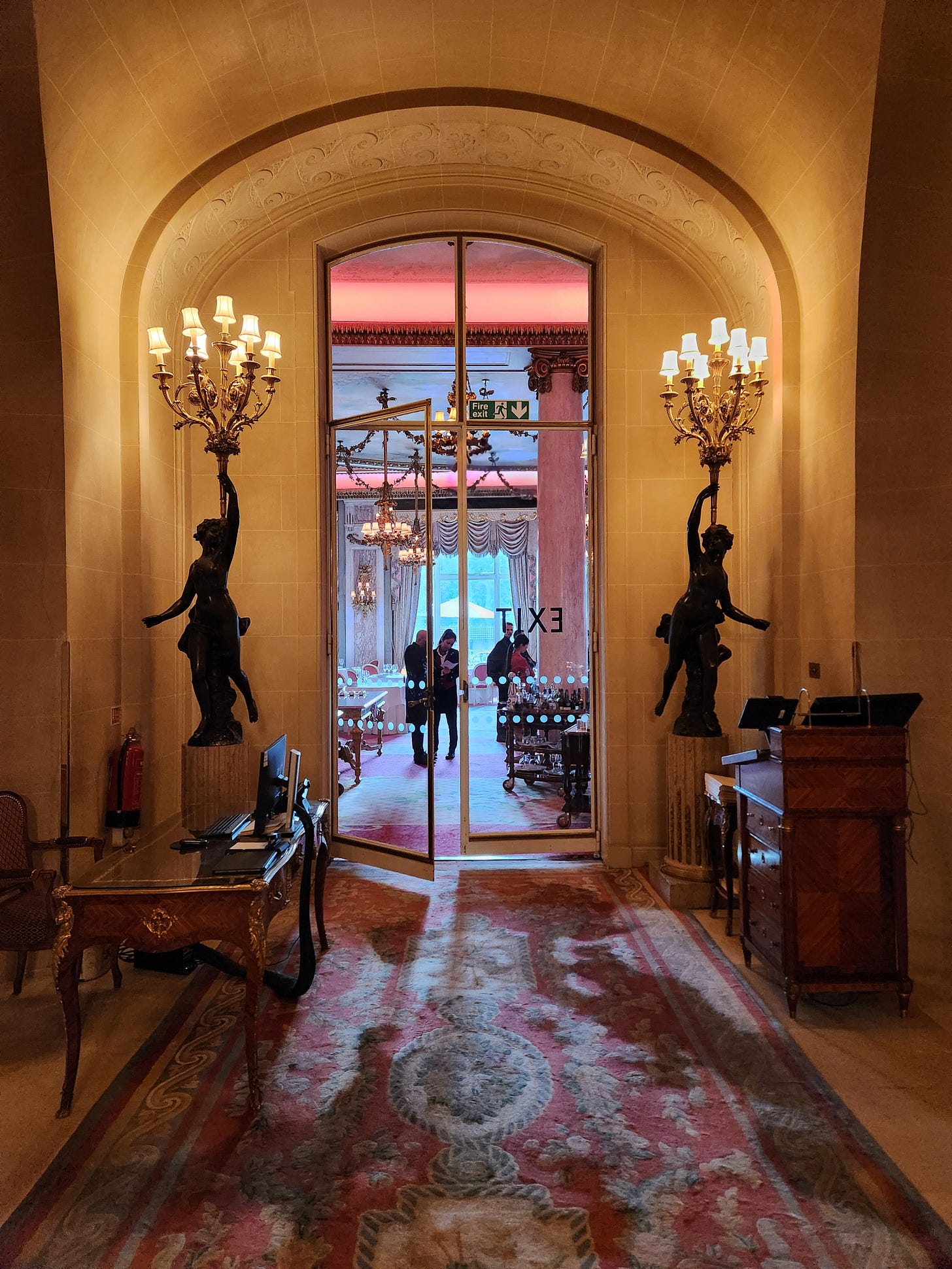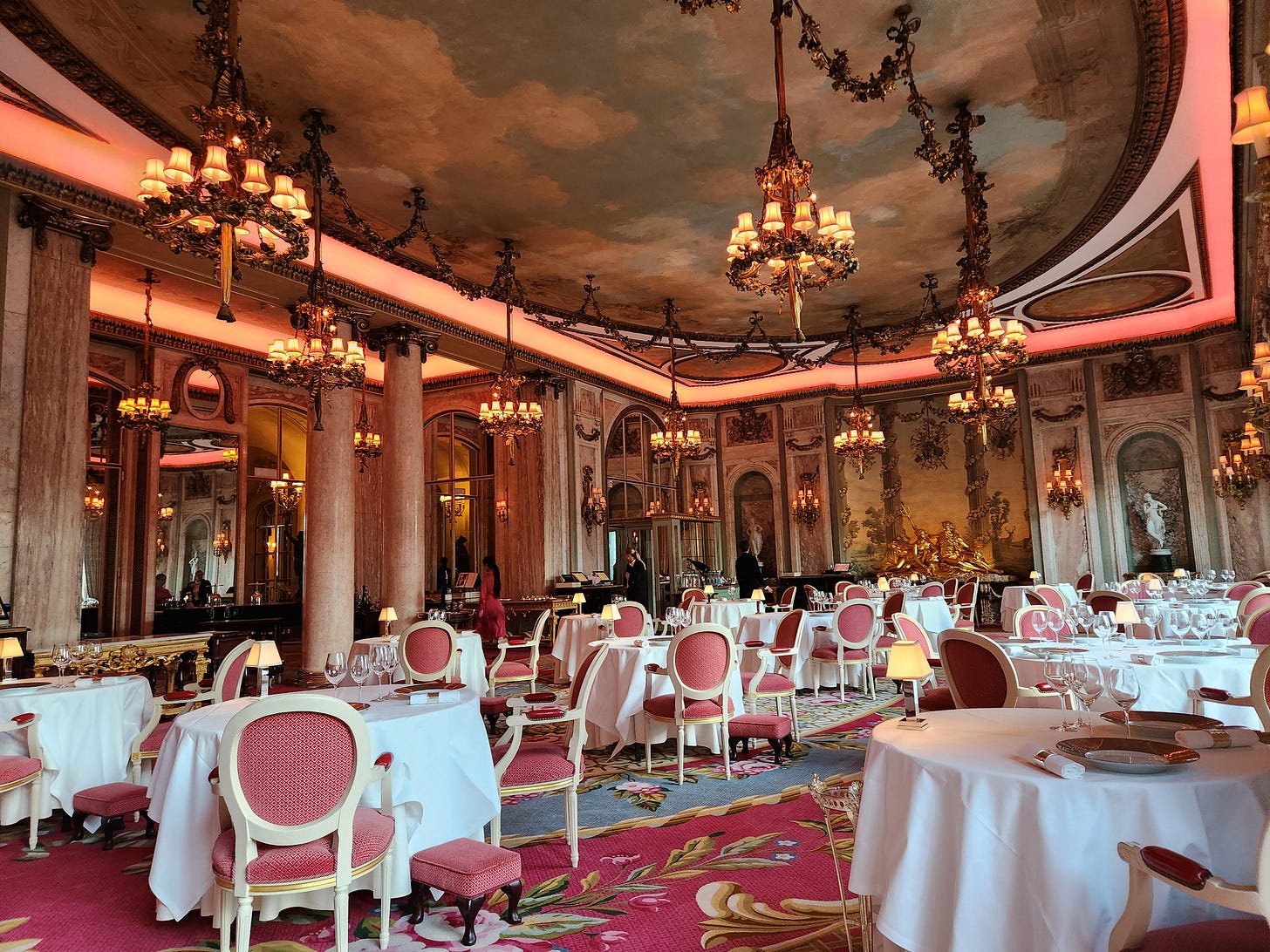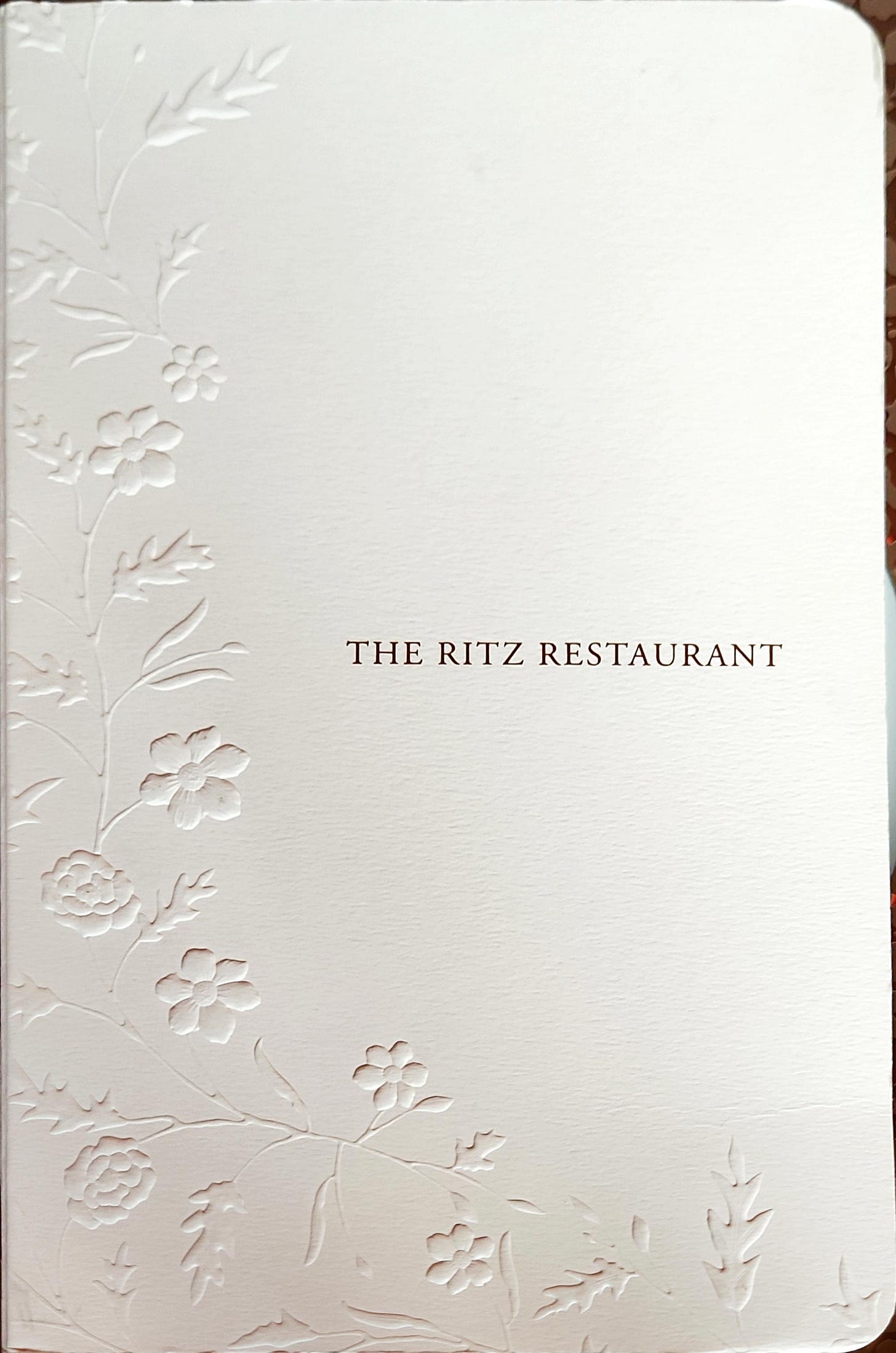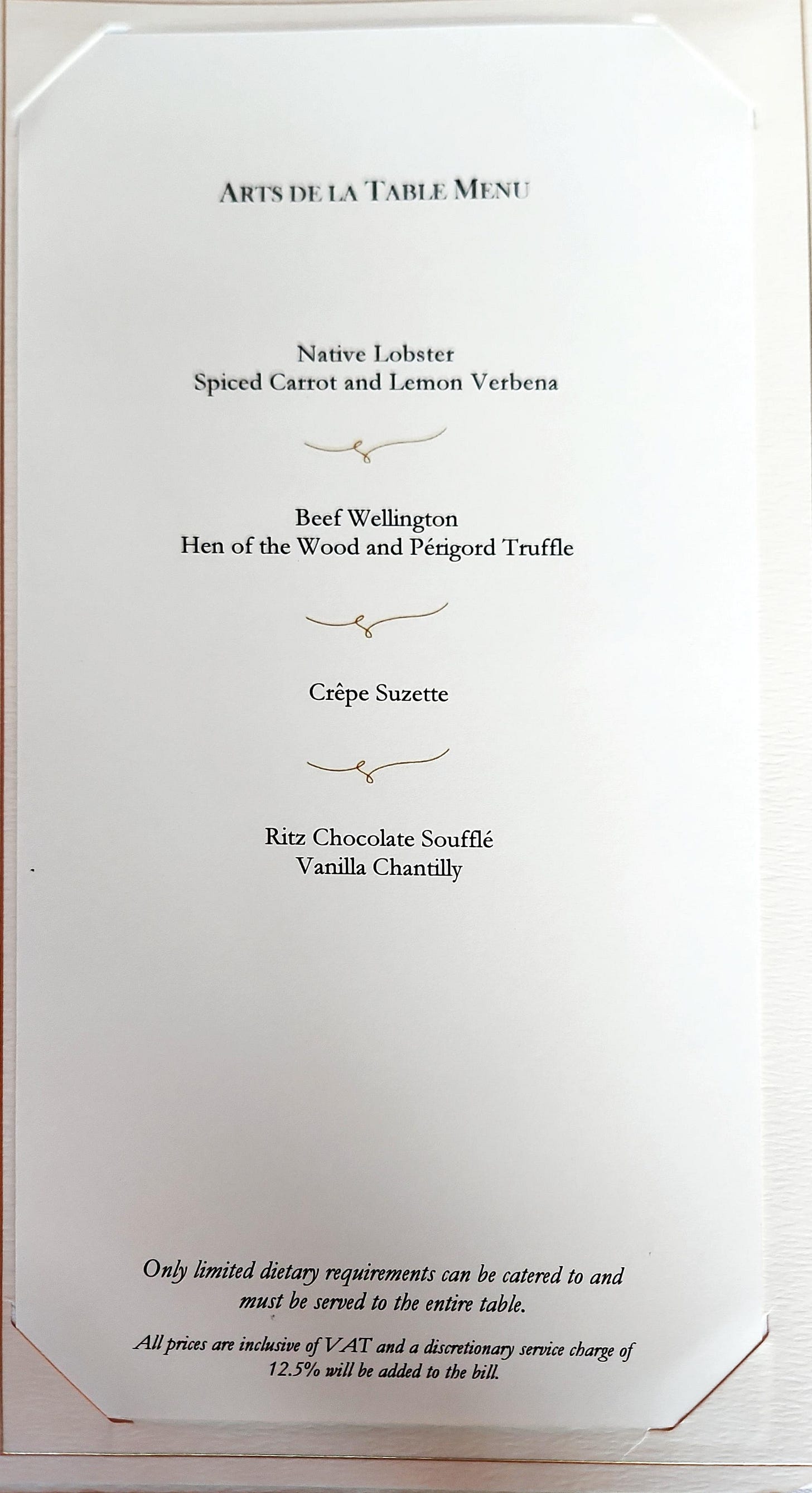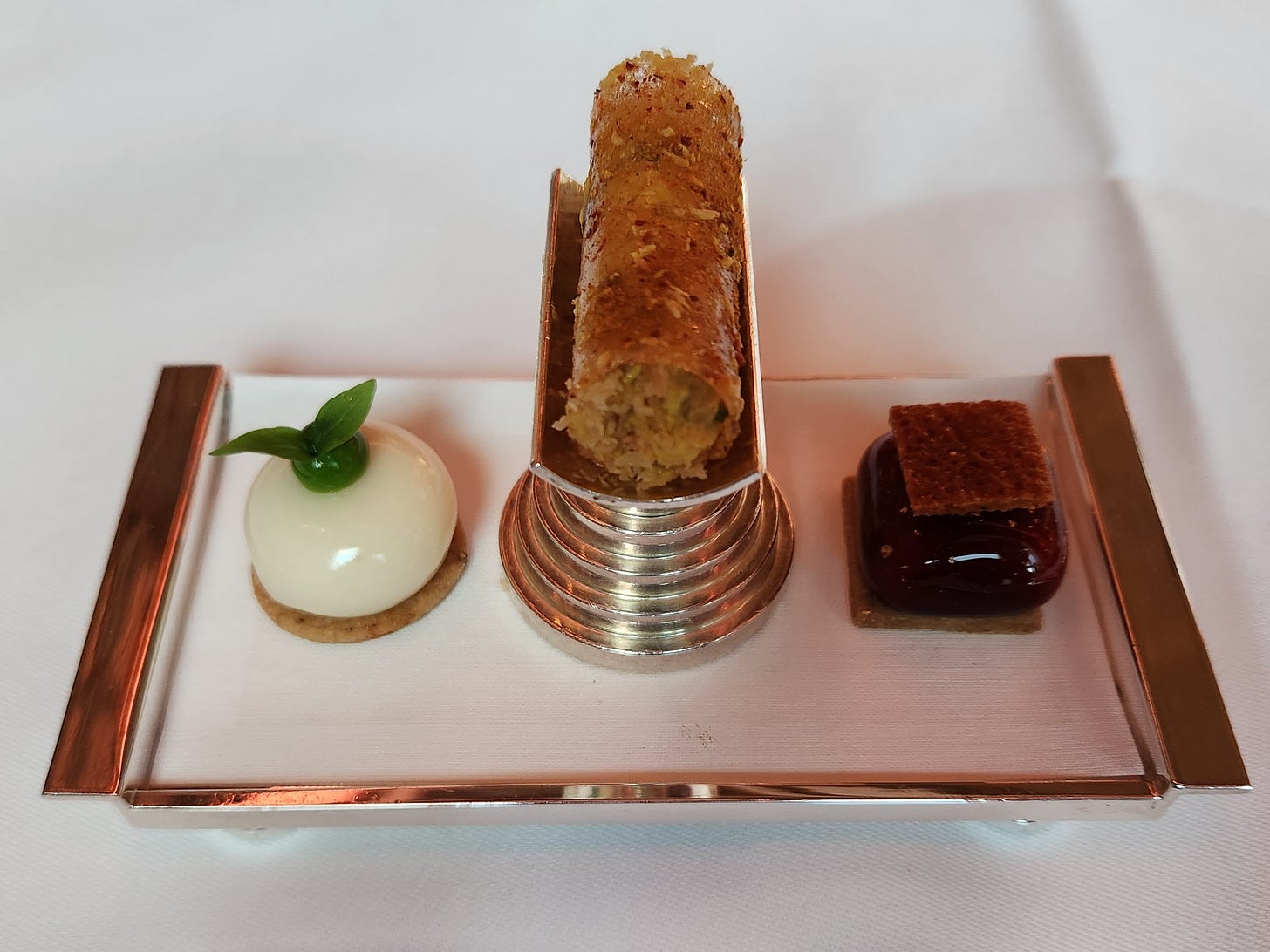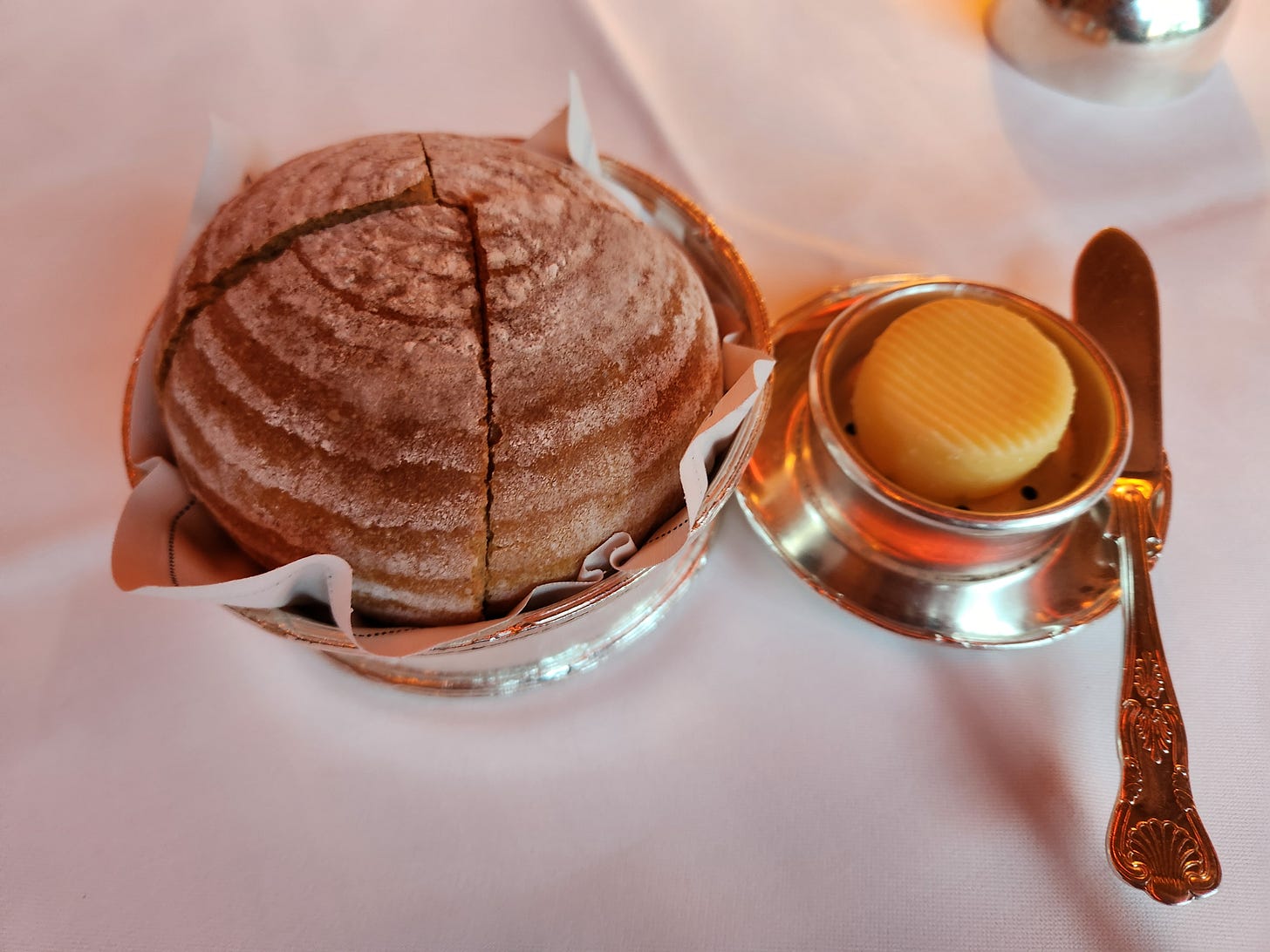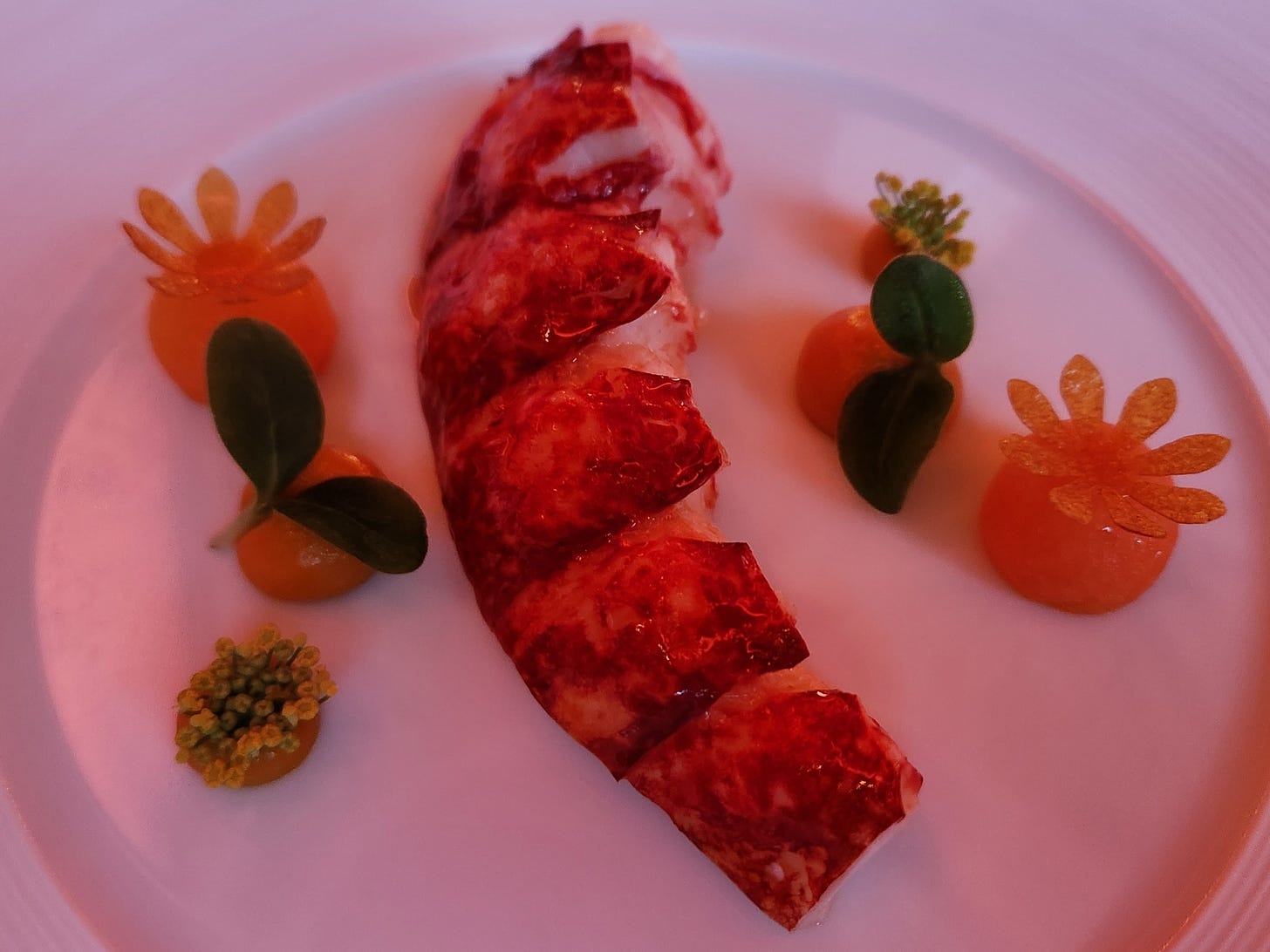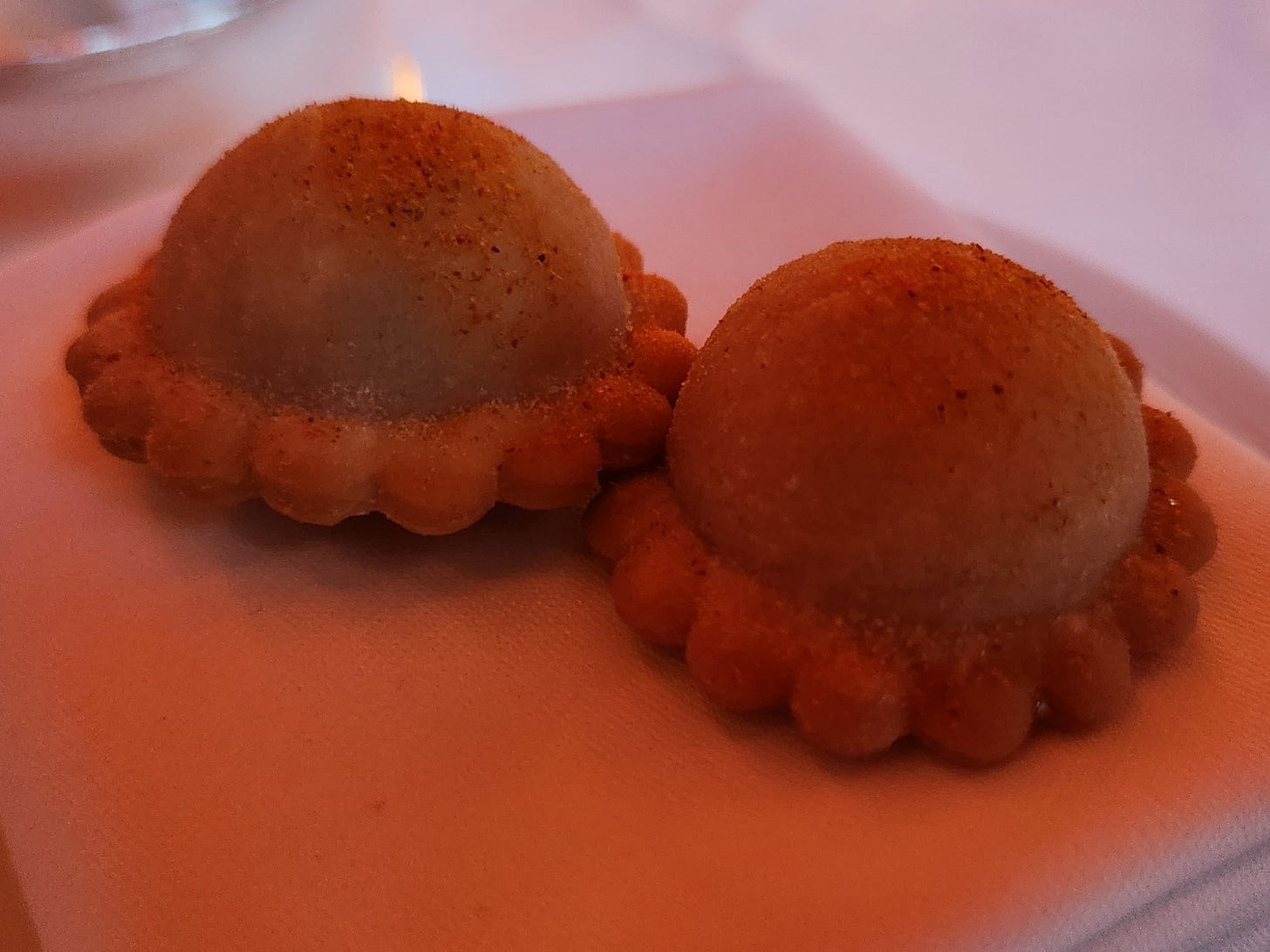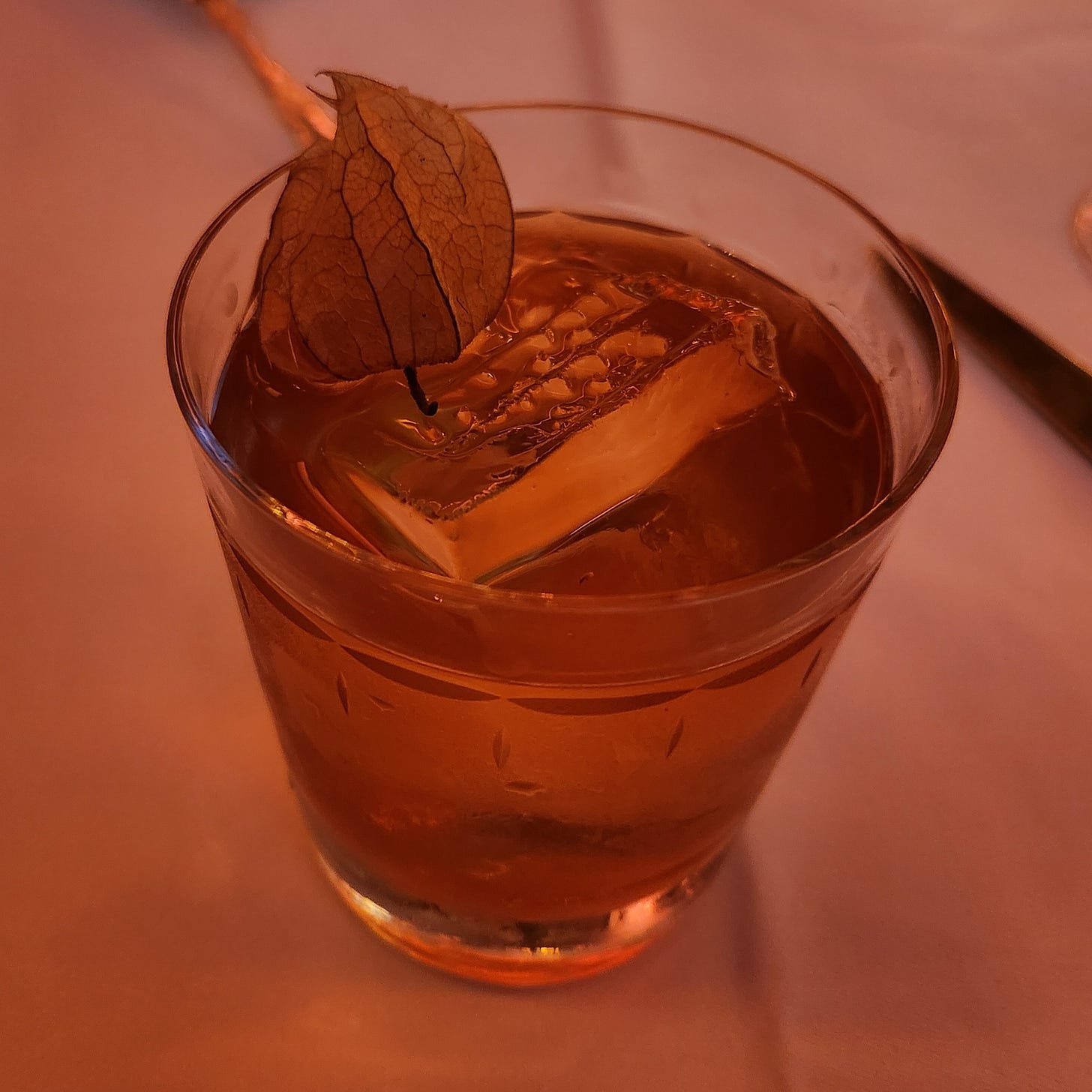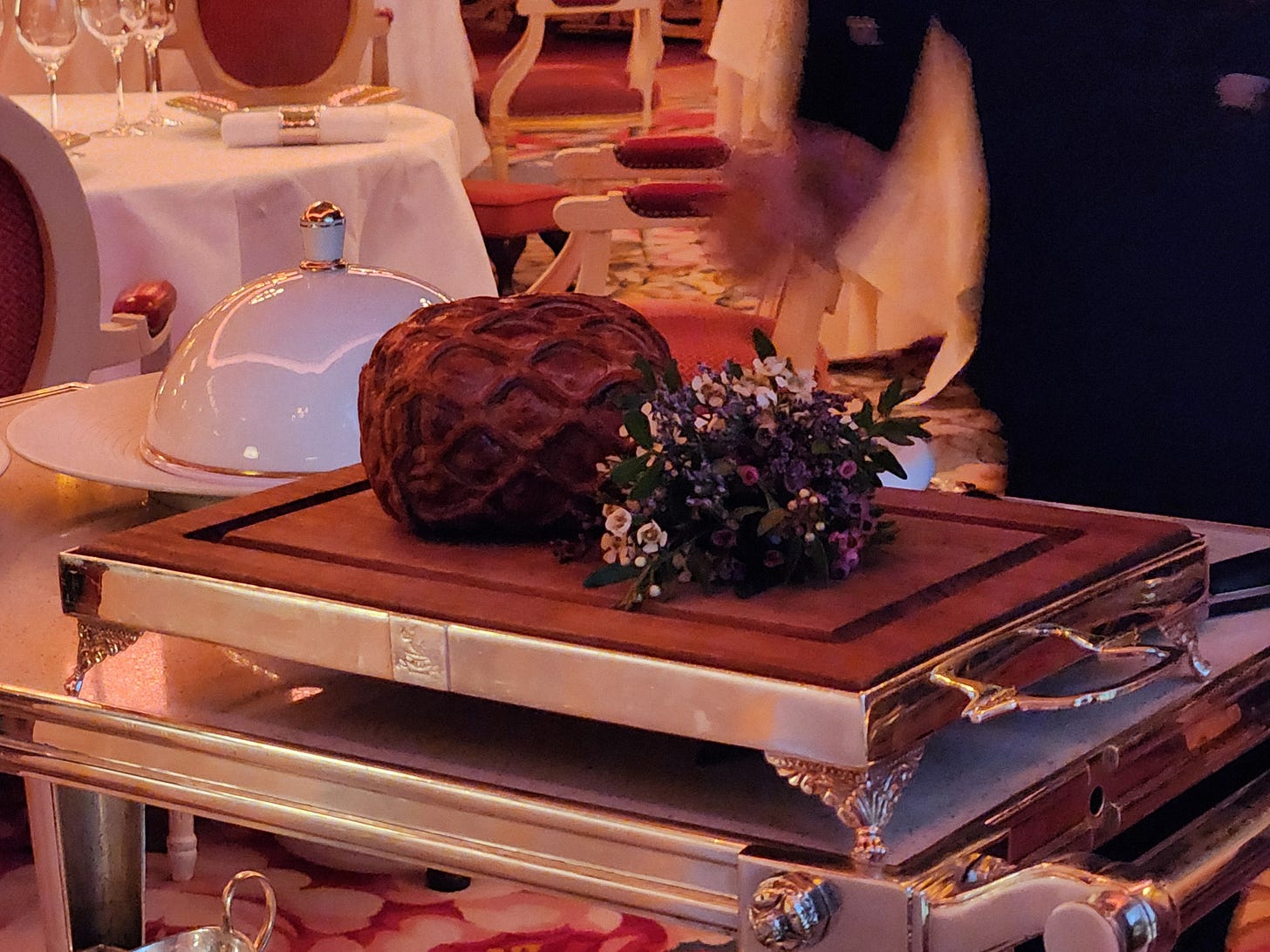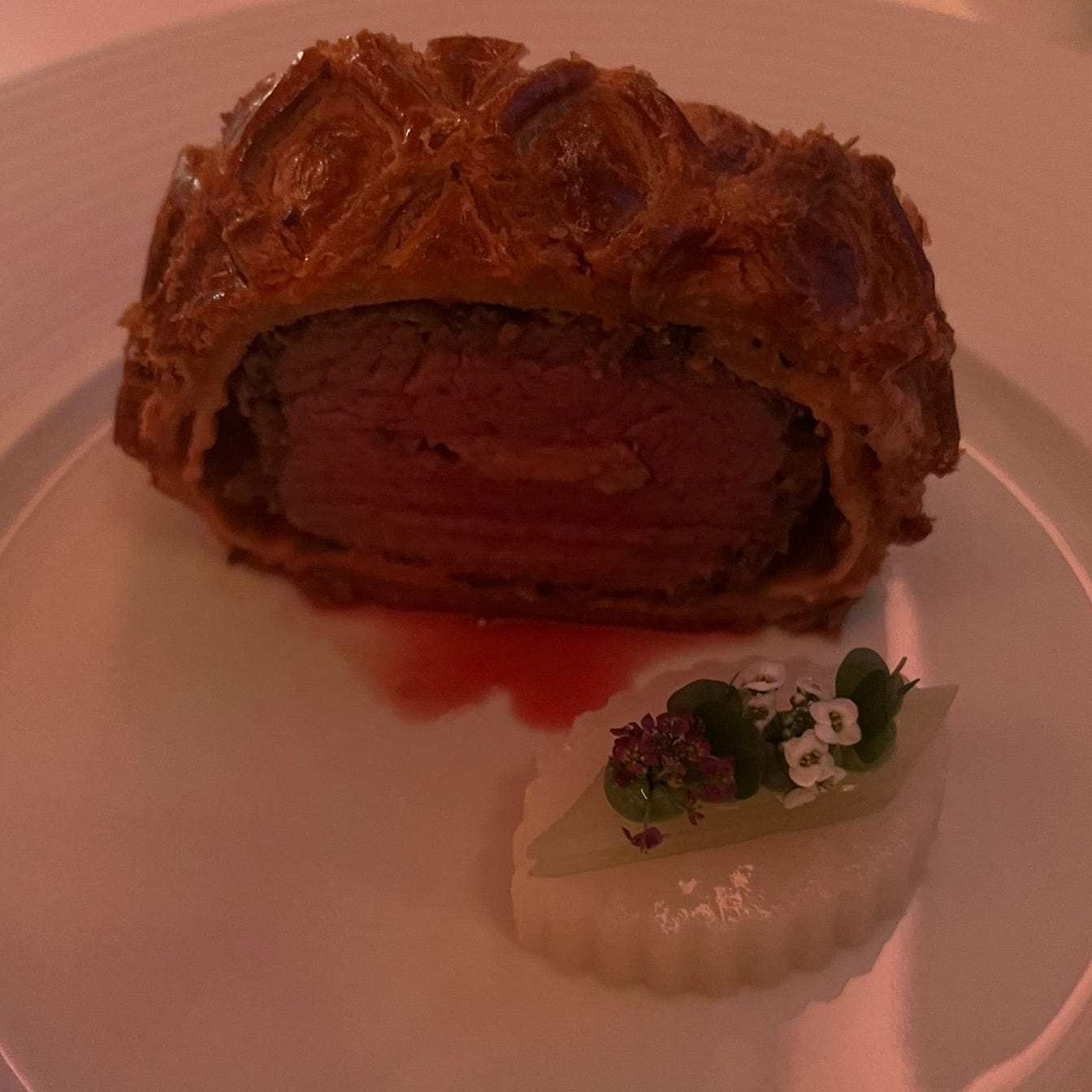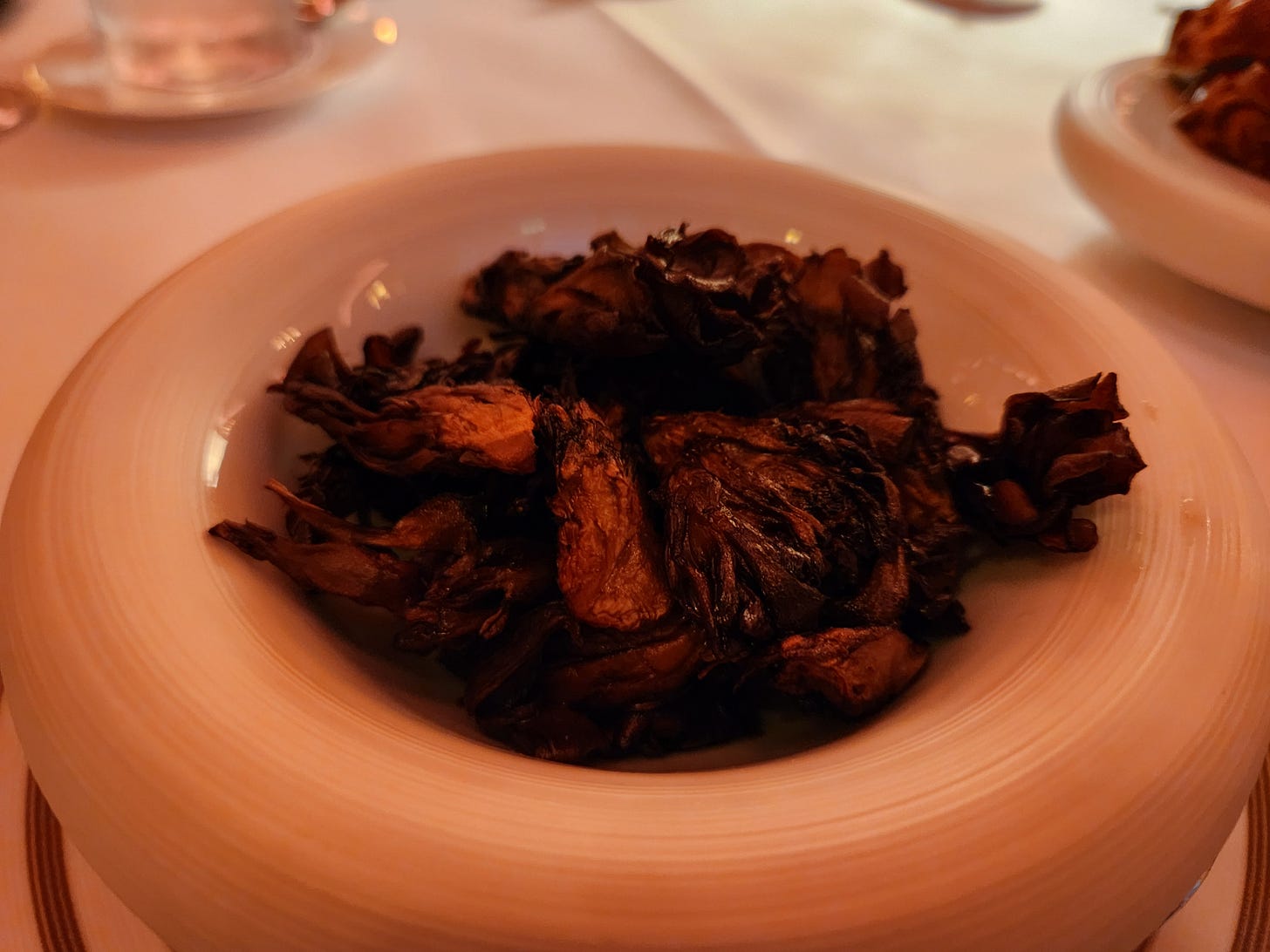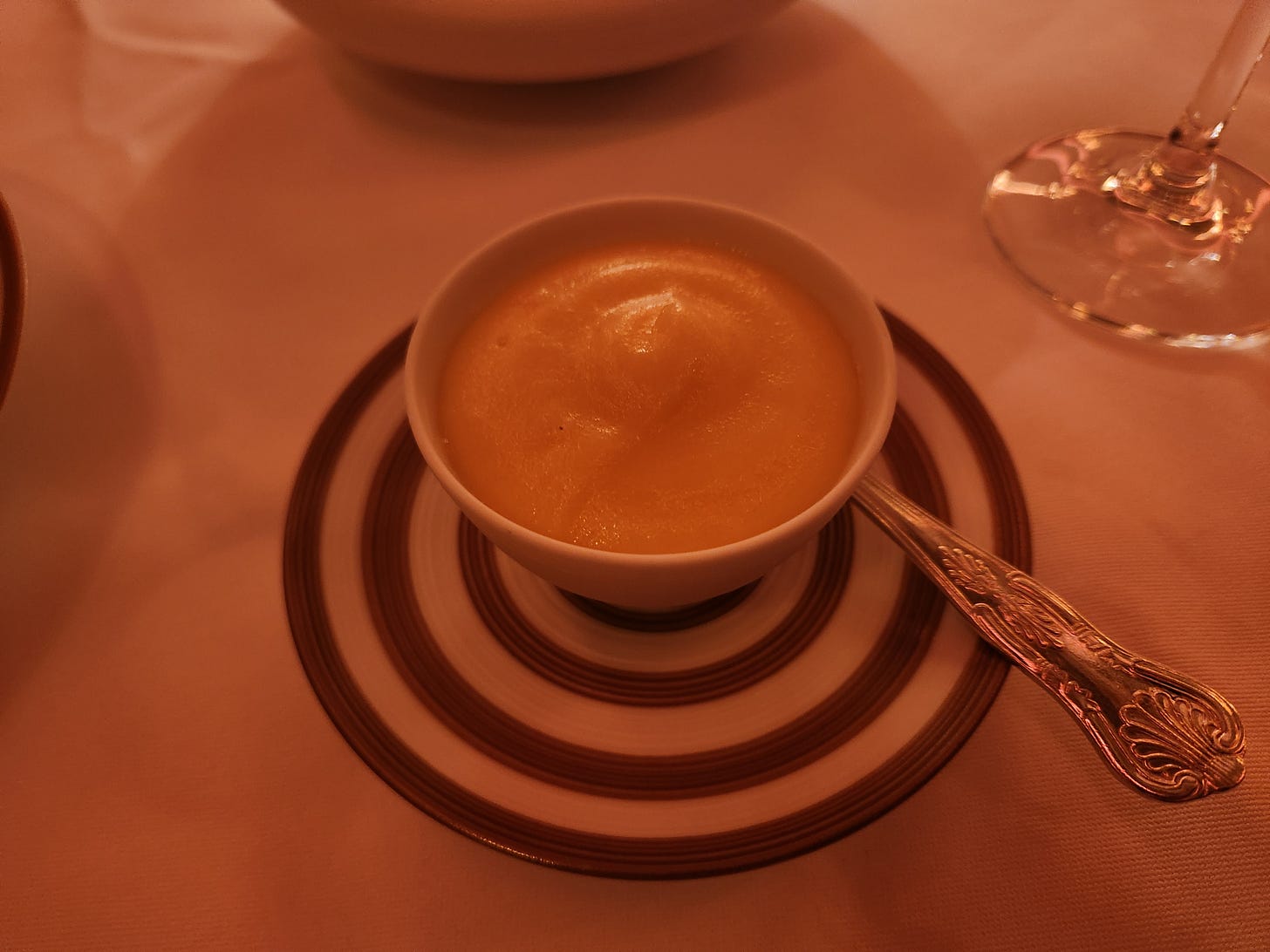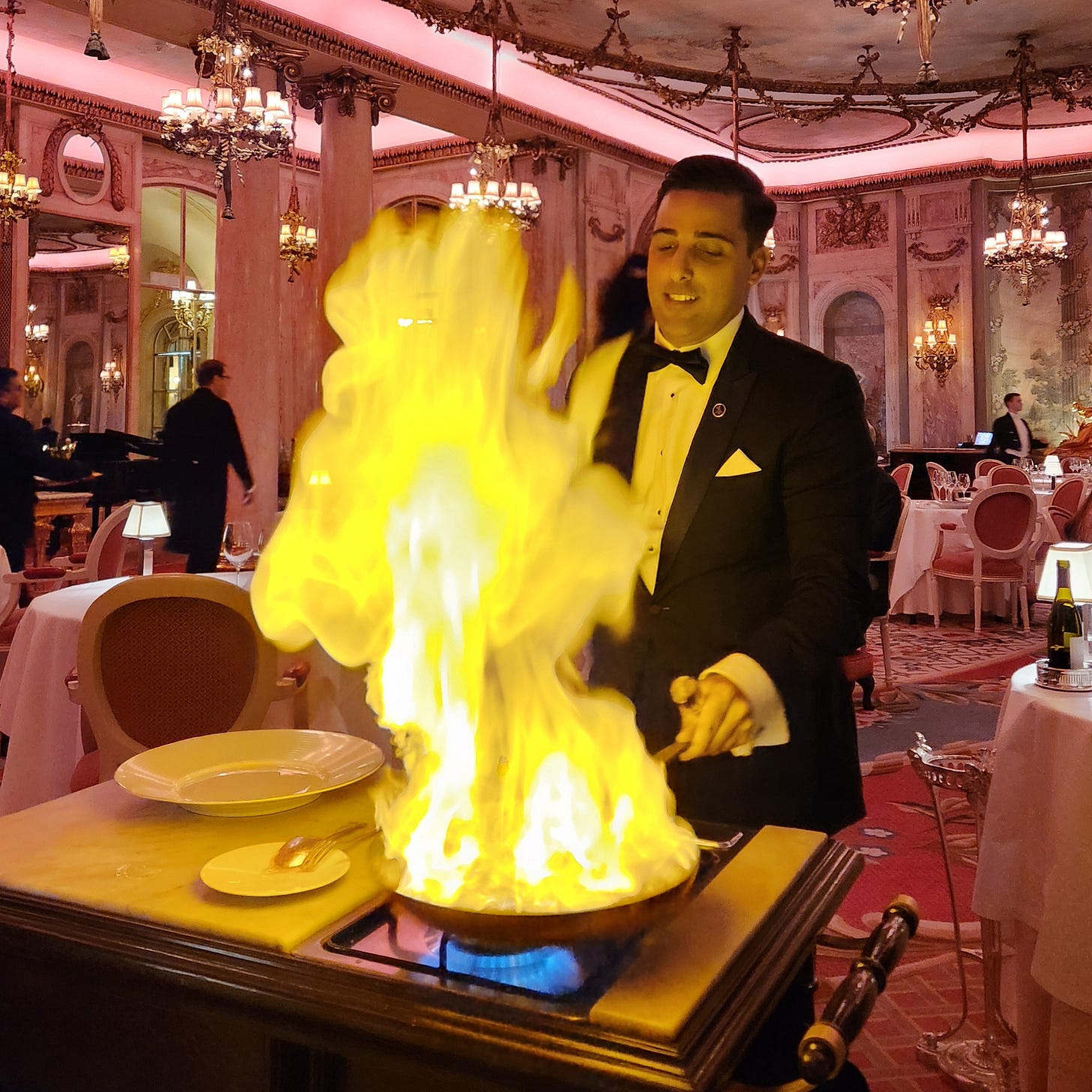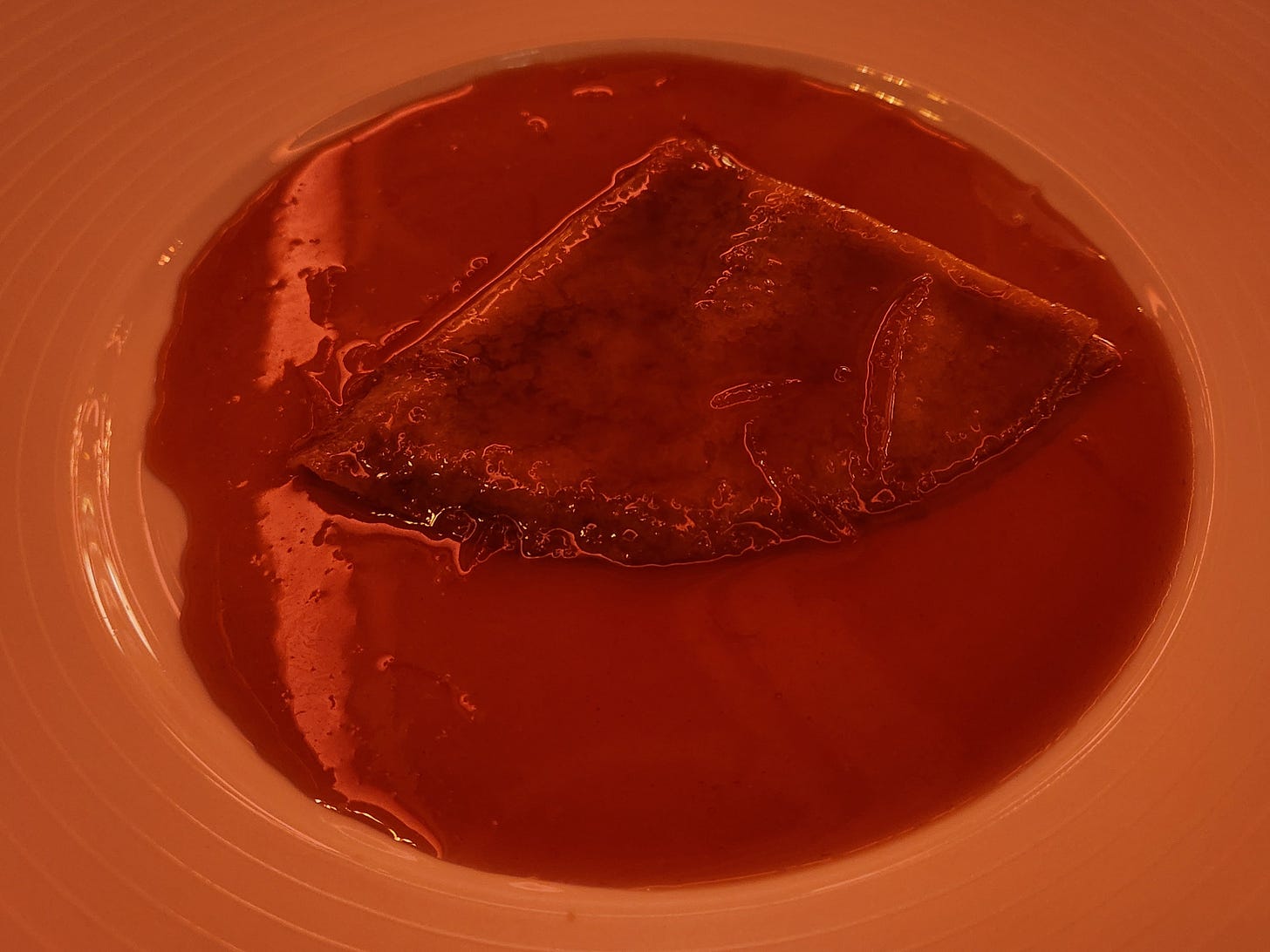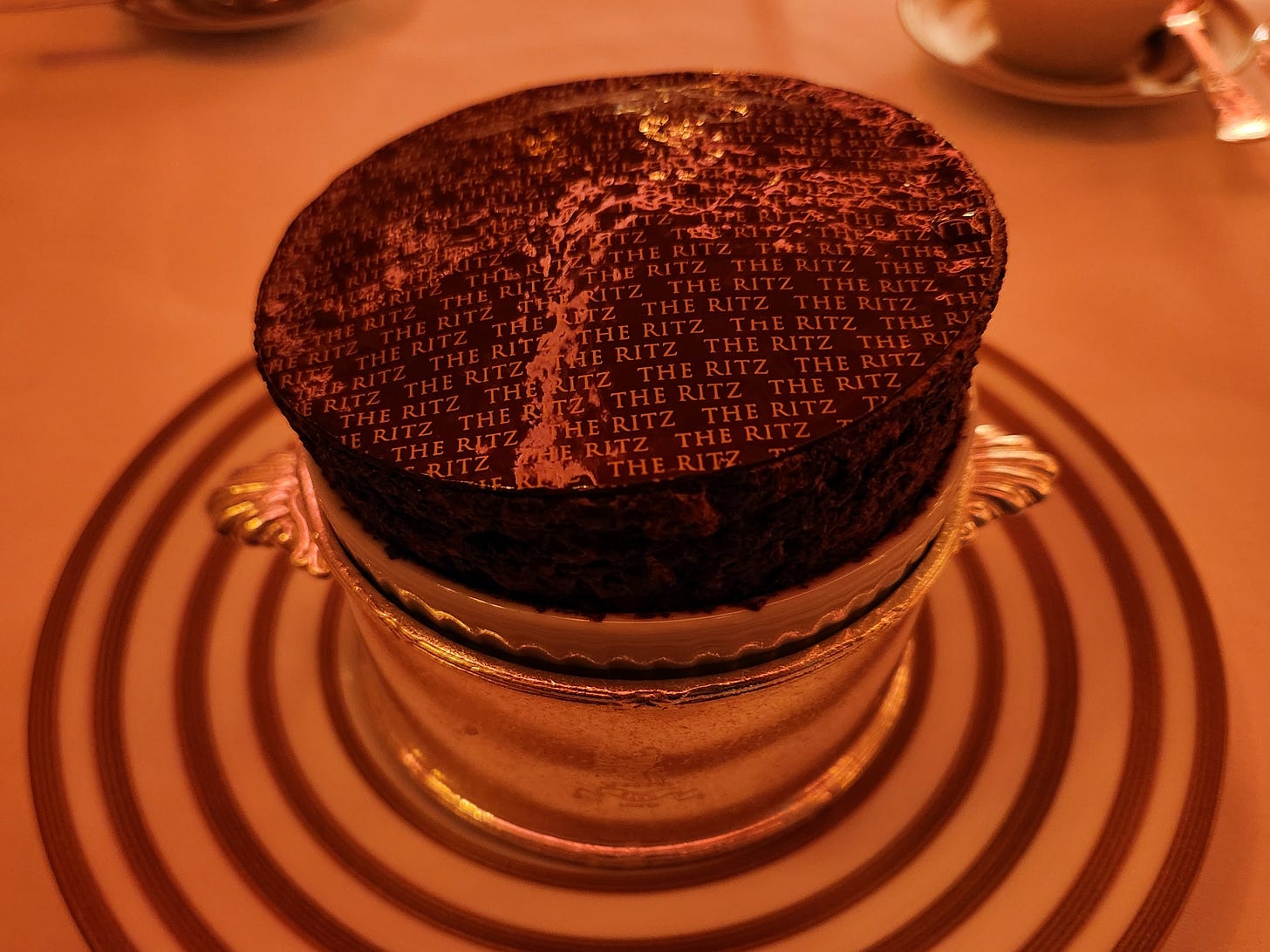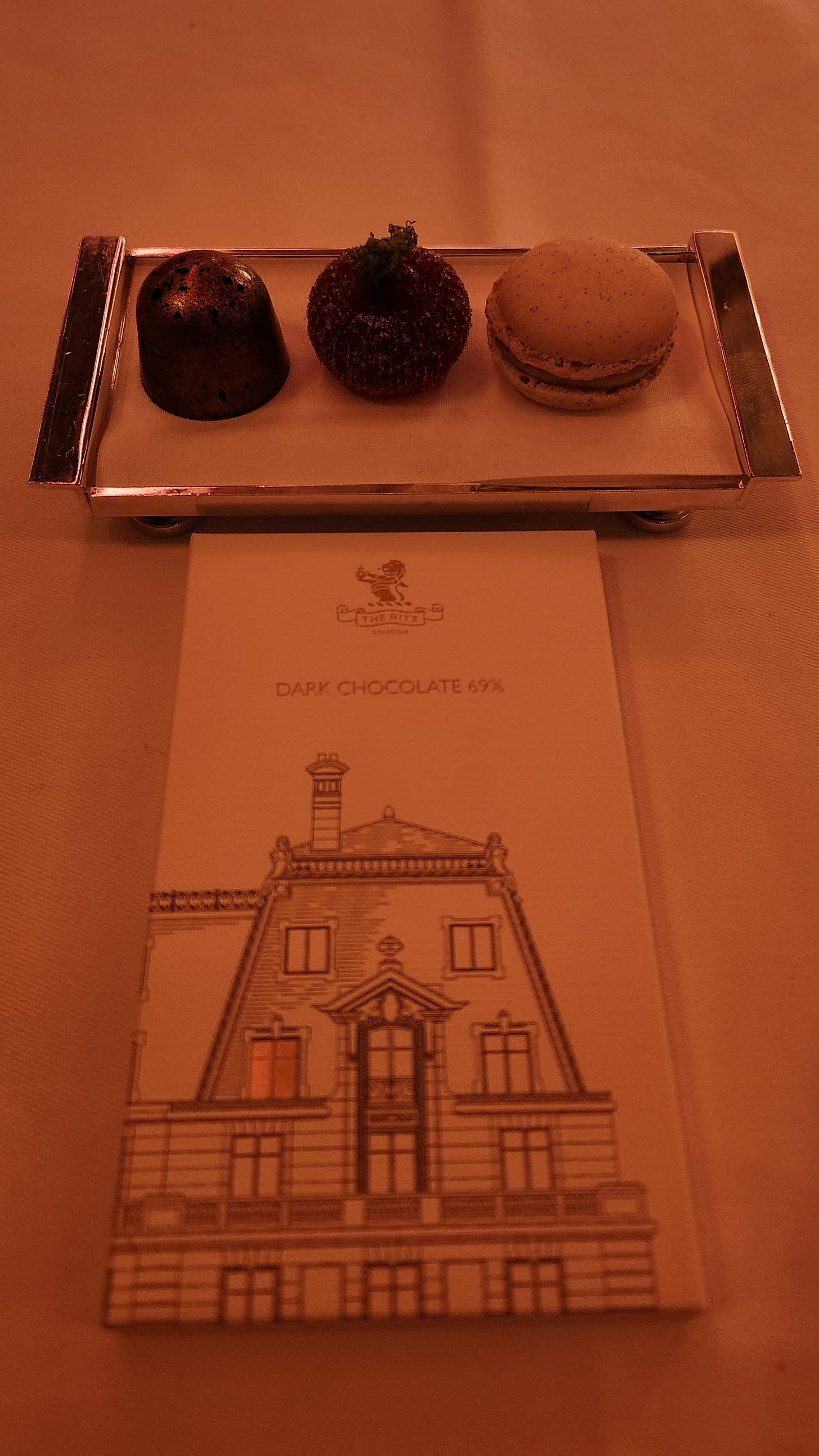The Ritz Restaurant
Regal Opulence in a Historic Landmark Hotel in London, UK
Back again in Picadilly, I showed up way too early for my next dinner reservation. In fact, I showed up before the restaurant opened and they recommended I grab a drink at the hotel bar, and I gladly obliged.
The Ritz Hotel opened in 1906 and became a symbol of luxury and opulence, so much so that the word “ritzy” entered the English language derived from the name of the hotel. Popular with high society, its list of patrons varied from royals, politicians, actors and ambassadors. It has been a set to great moments in history, and Winston Churchill Dwight Eisenhower and Charles de Gaulle were said to have met there to discuss ongoing operations during the second world war.
The London Ritz is actually the second one built, the first being built in Paris eight years before the London location. Both were designed to be the epitome of luxury, and it was the Prince of Wales, later King Edward VII, who famously said, “Where Ritz goes, I go.”
The current executive chef of the restaurant, John Williams MBE, joined in 2004. Under his leadership, the restaurant earned its first Michelin star in 2016 and has held on to it ever since. In 2024, he was appointed President of the Royal Academy of Culinary Arts.
Stepping back into my experience in the Ritz, I found myself in the Rivoli Bar, seated at the bar with a chatty, sharply dressed bartender. We discussed the drinks on the menu, and I put in an order.
Sticking with the classics, I ordered a Grey Goose martini, clean, with a twist of lemon. In retrospect, perhaps not the most appropriate spot for a martini. If I wanted a martini, I probably should’ve dropped by Duke’s, whose martini carts writer Ian Fleming is rumoured to have based his character’s drink order from. Less subtly, I could’ve also ordered the same at Spy Bar, inside the Old War Office. Nonetheless, the Rivoli Bar served up a stiff vodka martini, shaken, not stirred, served ice cold in a frosted martini glass straight out of the freezer with a twist of lemon.
When it came time for my reservation, I walked down the plush, opulent hallway, past the famous Palm Court on the left, past the live band playing for the patrons enjoying their afternoon tea. Little did I know that afternoon tea is enjoyed all times of day at the Ritz, the the “afternoon” tea continued until well after we finished our supper and were on our way out.
Stepping through two modernized glass doors, we entered the dining room, which looks largely unchanged from when the hotel opened in 1906.
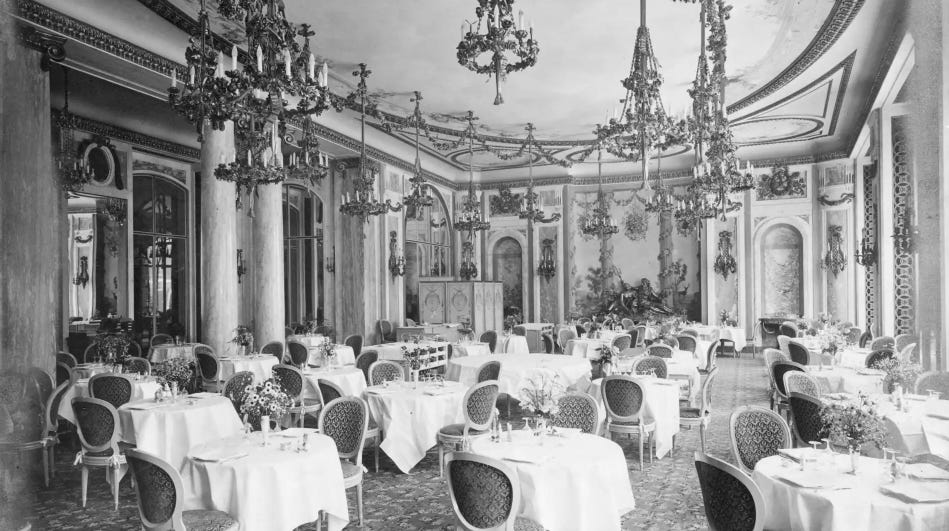
Little has changed in the dining room in the past 118 years. The chandeliers, white linen tablecloths, even the dining chairs look nearly exactly as they did in 1906.
We were escorted into the space by incredibly well-dressed staff, all in bow ties, vests and formal tailcoats. I thought the dress code of jacket and tie was a bit extreme, given most restaurants have been moving in the other direction and loosening their dress code. It became clear once I entered the dining room that anything short of jacket and tie would result in being very underdressed for the occasion.
We were presented with a neatly embossed menu outlining the courses in their “Arts De La Table” menu, as well as any modifications they recommended to meet our dietary requirements. They walked us through the ingredients, the preparation of the dishes, and made sure we were comfortable before the sommelier brought over the champagne trolley and offered us a drink.
I was halfway through my stiff martini, and my companion was a teetotaler, so we both decided to pass and start with the meal.
The canapes consisted of (from left to right) a parmesan and black olive mousse topped with a drop of basil oil, a light crispy roll, filled with coronation chicken, and a square of foie gras coated in a sour cherry jelly.
The bread course of a steaming hot sourdough, presented with artisanal handmade butter imported from a specific farms in France. It was so good we ended up finishing two of three loaves, regretting it later when we couldn’t finish our desserts.
The first course was a lobster tail with some carrot puree and microgreens, topped with a lemon verbena sauce. The lobster was perfectly done and paired perfectly with the tangy, citrusy sauce.
The lobster was accompanied from two deep fried lobster ravioli, piping hot out of the fryer. A mouthful of rich, buttery , steaming minced lobster in a crisp, bready covering. An unexpected hit.
By now, I’d finished the martini, so onward to my second drink, the Churchill Courage. This signature drink from the Rivoli bar mixes a butter washed bourbon with white port, maple syrup and vanilla bitters to form a slightly sweeter version of an Old Fashioned, garnished with a single gooseberry.
The beef wellington main course came next, presented whole along with a bouquet of wildflowers. It was carved tableside, and presented ceremonially.
Notoriously finicky to make, A medium beef tenderloin stuffed with foie gras, coated in a thick layer of duxelles, wrapped tightly with a flaky puff pastry and topped with a truffle Madeira jus. On the side, a salt-baked celeriac just oozing with juice, topped with a piece of celery and microgreens.
Usually, I avoid beef wellington. Being so difficult to make well, it’s often used as a judge of a restaurant’s prowess and restaurants will have it on the menu to demonstrate that they can do a beef wellington, not that they do it well. The puff pastry often comes soggy, while the beef itself is cooked well beyond what polite society would call a steak.
Not so at the Ritz - a crisp layer of puff pastry, tightly wrapped around a medium tenderloin, perfectly done. The first good beef wellington I’ve ever had.
The main was served with a side of crispy baked hen of wood mushrooms on yet another hemisphere plate, and a sake cup filled with buttery mashed potatoes.
Reminding me a bit of Eli Roth character in Inglorious Basterds, the restaurant manager, Enzo, took the time to explain the history and provenance of the Crepe Suzette while preparing the pre-dessert for us.
He joked around with us, explaining the original 1895 recipe, the story of how it was named, and suggesting that they rename the alcohol-free version for my teetotaler companion. He went as far as to reprint the menu for us with the dessert renamed.
In contrast with the other staffs’ very formal and almost stiff interactions with us, Enzo was jovial and warm. He joked around about his heritage, explained his history at the restaurant, joining when he was 22 and working his way up to restaurant manager over the past 14 years. He talked about their approach at the restaurant, the training of junior staff, and the tenure of staff at the restaurant.
He explained the history of the hotel, as well as the restaurant, and the dishes highlighted, using each step in the process of cooking the crepe suzette to tell the next part of his story, cumulating with the “accidental” ignition of the orange liquor.
The crepe suzette, bathed in a viscous orange caramel, served with vanilla ice cream on the side
Finally, the showstopper dessert, a massive chocolate souffle served with vanilla Chantilly cream. A perfect souffle, slightly crispy around the edges, fluffy on the inside, so light you have no idea how the dessert manages to stay standing served piping hot out of the oven.
A small plate of petits fours and a chocolate bar later, we were completely stuffed and ready to roll out of the dining hall.
An amazing night of opulence and extravagance bringing us back to the gilded age - the ages of royals and robber barons, mystique and intrigue.
Originally, I was on the fence about making a booking at Ritz with their rather stuffy dress code. I asked around for opinions about London fine dining, and the collective voice came back suggesting that they didn’t understand why the Ritz only had a single Michelin star - it should have more. That sealed the deal and I made the reservation. I was not disappointed.
Total Damage 430 GBP/2 people


